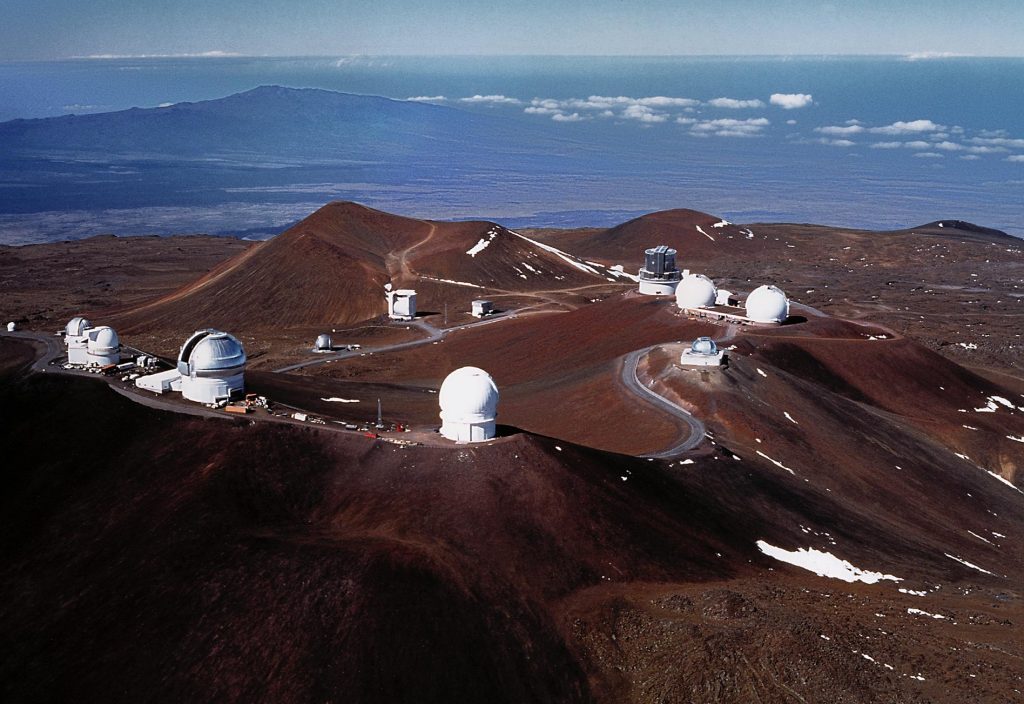Light pollution. Satellite trains and radio frequency interference. Encroaching civilization.
These all pose threats to ground-based astronomy. But, did anyone ever think that global climate change might wreak havoc on observatories? It turns out the answer is “yes. ” We’re all familiar with the predictions about global climate change.
It will make hot places hotter, cold places colder, and bring wilder weather to places around the planet. Economically, its effects already make a dent in global trading and are changing living conditions for millions of people. And, inevitably, it will change astronomy and the places where astronomers do their work.
Observatories Need Dry, Clear Air Observations from ground-based telescopes are incredibly sensitive to local atmospheric conditions. Most observatories are located well above sea level. Less atmosphere to peek through means better astronomical data.
And, there are other factors, too. For example, observatories on the Big Island of Hawai’i sit atop a 4,000-meter volcano. Infrared-sensitive instruments, like those at the Subaru and Gemini observatories, function very effectively there.
That’s because there is so little water vapor in the high-altitude air and near-infrared light can slip right through. Many telescopes are also built in deserts, which also have less cloudy nights and lower water vapor content. Those observing sites are much more sensitive to climate change.
Wilder conditions will adversely affect observatories long before their instrument lifetimes are up. Back when these places were planned and built, selection committees only looked at shorter-term atmospheric analyses (like five years or so of weather data). They also used older climate models to project future conditions at the sites.
As astronomy faces the challenges of global climate change, it looks like it’ll have to improve its site selection criteria and look at longer-term climate predictions. That’s the conclusion a team of researchers came to, led by Caroline Haslebacher at the University of Bern and the National Centre of Competence in Research (NCCR) PlanetS. They analyzed environmental conditions at a number of the world’s sites.
The group also looked at the site selection process for each facility. Team members recommend that planners use longer timeframes and newer climate models to predict atmospheric conditions at new sites. Climate Change and Ground-based Observatories So, how will things change for astronomy in the age of anthropogenic climate change? For one thing, global warming has the effect of putting more water into the atmosphere.
To be specific, major astronomical observatories from Hawai’i to the Canary Islands, Chile, Mexico, South Africa, and Australia will experience an increase in temperature and atmospheric water content by 2050. Those changes will affect observing time and the quality of data they obtain. Global climate change’s effects will reach right up the skies, affecting such places as the VLTI in Chile.
Courtesy ESO. “Nowadays, astronomical observatories are designed to work under the current site conditions and only have a few possibilities for adaptation,” said Haslebacher, the lead author of the study. “Potential consequences of the climatic conditions for telescopes, therefore, include a higher risk of condensation due to an increased dew point or malfunctioning cooling systems, which can lead to more air turbulence in the telescope dome.
” It’s likely that the technology and observing practices in current facilities can adjust to these conditions in the short term. However, for future observatories, planners should use better atmospheric models in site selection criteria. Haslebacher points out that improved data is the key to avoiding the degradation of ground-based astronomy.
“Even though telescopes usually have a lifetime of several decades, site selection processes only consider the atmospheric conditions over a short timeframe. Usually over the past five years – too short to capture long-term trends, let alone future changes caused by global warming,” she said. What’s Next for Observatories in an Age of Climate Change? The fact that past planners didn’t take the effects of climate change into account was not simply an oversight.
They had to plan with the information they had. Study co-author Marie-Estelle Demory (of the Wyss Academy at the University of Bern, Switzerland) points out that state-of-the-art climate models are incredibly important for future observatory sites. “Thanks to the higher resolution of the global climate models developed through the Horizon 2020 PRIMAVERA project, we were able to examine the conditions at various locations of the globe with great fidelity,” she said.
“This is something that we were unable to do with conventional models. These models are valuable tools for the work we do at the Wyss Academy. ” Global climate change isn’t going away.
It’s something that we’ll all have to deal with in the coming decades. For astronomers, it’s yet another challenge to face. The silver lining is that the data are there to help, according to Haslebacher.
“This now allows us to say with certainty that anthropogenic climate change must be taken into account in the site selection for next-generation telescopes, and in the construction and maintenance of astronomical facilities,” she said. For More Information How global warming affects astronomical observationsImpact of climate change on site characteristics of eight major astronomical observatories using high-resolution global climate projections until 2050 The post Climate Change is Making the Skies Worse for Astronomy appeared first on Universe Today. .
From: universetoday
URL: https://www.universetoday.com/157799/climate-change-is-making-the-skies-worse-for-astronomy/



